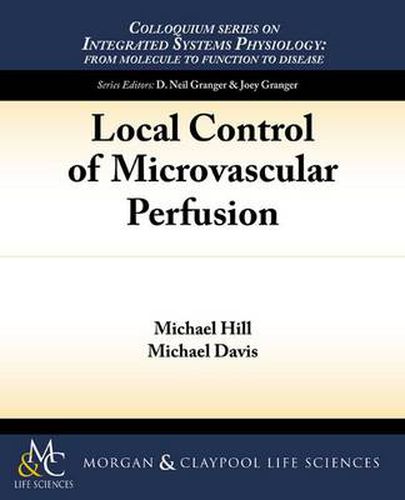Readings Newsletter
Become a Readings Member to make your shopping experience even easier.
Sign in or sign up for free!
You’re not far away from qualifying for FREE standard shipping within Australia
You’ve qualified for FREE standard shipping within Australia
The cart is loading…






Local control of microvascular perfusion refers to the ability of individual tissues to maintain a relative constancy of hemodynamics in the face of changing perfusion pressure while meeting metabolic demands appropriately. The regulation of local blood flow, or autoregulation, and its underlying mechanisms have been a subject of considerable interest for over 100 years. Particular focus has been placed on the acute interaction of myogenic (pressure-induced) and metabolic (local production of vasodilator metabolites) parameters and how they interact with flow (shear stress)-dependent and conduction-based mechanisms to produce integrated local vascular network responses (for example, as seen during reactive and functional hyperemia). This monograph discusses each of these vasoregulatory phenomena while also considering evidence for their underlying cellular mechanisms. Further, an attempt is made to integrate the information into complex in vivo situations and consider their relevance to pathophysiological situations.
$9.00 standard shipping within Australia
FREE standard shipping within Australia for orders over $100.00
Express & International shipping calculated at checkout
Local control of microvascular perfusion refers to the ability of individual tissues to maintain a relative constancy of hemodynamics in the face of changing perfusion pressure while meeting metabolic demands appropriately. The regulation of local blood flow, or autoregulation, and its underlying mechanisms have been a subject of considerable interest for over 100 years. Particular focus has been placed on the acute interaction of myogenic (pressure-induced) and metabolic (local production of vasodilator metabolites) parameters and how they interact with flow (shear stress)-dependent and conduction-based mechanisms to produce integrated local vascular network responses (for example, as seen during reactive and functional hyperemia). This monograph discusses each of these vasoregulatory phenomena while also considering evidence for their underlying cellular mechanisms. Further, an attempt is made to integrate the information into complex in vivo situations and consider their relevance to pathophysiological situations.